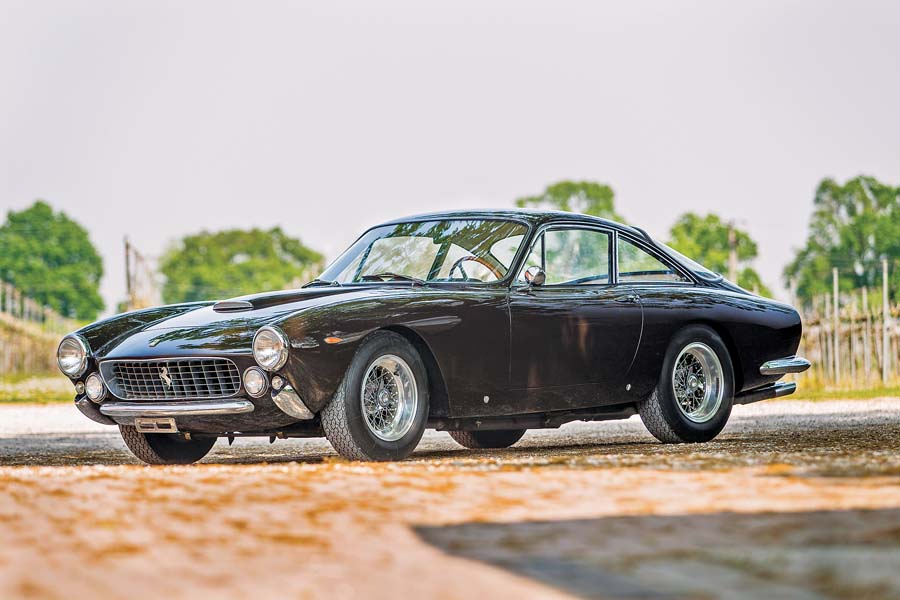Chassis Number: 5681GT
This car was seen at Ferrari’s 50th anniversary festivities in Rome and Maranello in May of 1997. The Ferrari was then finished in dark brown by Bachelli & Villa with a tan leather interior by Luppi. The current Italian owner bought the Lusso in 1999. Still finished in dark brown over beige, a strikingly elegant color combination, the GT/L presents quite nicely throughout and is accompanied with a car cover and tool roll.
Many consider this car to be the most attractive model of the Ferrari 250 Series. The Lusso is just as wonderful to look at as it is to drive. Capable of crossing large tracts of land at high speed while cosseting its driver and passenger in ultimate comfort, the Lusso is a grand tourer par excellence — and a wonderful automobile by all accounts. Thanks in part to its highly compelling color, chassis 5681GT stands out from the rest as a remarkable example of the vaunted 250 Ferrari.

